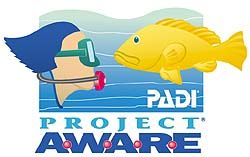Hantu Blog's 3rd Anniversary Dive Part FIVE
 The light of the apricot sun vanished over world's end, signalling the start of a dark adventure beneath the waves...
The light of the apricot sun vanished over world's end, signalling the start of a dark adventure beneath the waves...25 March 2007
Dive No. 4 - Denizens of the Dark Waters
Dive Site: Western Fringing Reef (Flabellina Garden)
Location: Pulau Hantu Besar
Visibilty: 3 m
Temperature: 29°C
Maximum Depth: 13.7 m
Actual Bottom Time: 61 mins
Time In: 1912 hrs
A truely unique experience and a rare chance to brave the dark side of Pulau Hantu. Due to the challenging and limited visibility, Hantu's waters are rarely dived at night. We were one of the fortunate few who had the opportunity to explore Hantu's nocturnal reef life. The fringing reef was bustling with activities after sunset and was like a circus of crabs and shrimps! Check out some of the specimens that you don't usually find diurnally.
We came across 2 specimens of this species resting among the reef. They do not get spooked easily with the divers' careful approach. They are usually found in intertidal regions and down to about 50 metres, on rocky, coral, or mud shores. So we actually get plenty of them on Singapore's seashores.
The Red Egg Crab is a large oval shaped crab, with a wide and long, arc-shaped front edge to the carapace. It grows to a carapace width of about 12 cm.
The front of the carapace is extremely broad compared to the rear, which is quite indistinct. Two thirds of the way around its carapace edge, a blunt bump divides the front from the very short side and rear edges. The upper surface of the carapace is convex (curving outwards) and is quite smooth, without any major spines. It has large equal-sized chelae with brown or black fingers(pincers). Its legs often have distinct crests. The males of dark-fingered crabs have the usual complement of seven abdominal segments reduced to five by having segments three to five fused together. The Red Egg Crab is uniform light brown to reddish brown in colour, with white "lace-work" mottling on the carapace and brown spotted limbs. Underneath the carapace is cream in colour. The Red Egg Crab is poisonous and should not be consumed.
This is a fairly common swimming crab in Singapore waters. There are alot of similar species. Thalamita admete is distinct because the females have bright blue legs. The males are just drab orange-brown with spots. This Swimming Crab is classified under the genera of Thalamita because it has four teeth on each side of the frontal edge of its carapace whereas the Charybdis species have got five teeth. Swimming crabs are very good swimmers and can move very quickly on the reef. They are defensive and can inflict considerable painful wounds so are best left alone.
This undescribed species is strictly related to Urocaridella antonbrunii but is recognised by its very transparent body and its much sparser white and red spotting. Its behaviour is similar to U. antonbrunii which I have described in an earlier post here.
Sometimes also known as a Ghost Shrimp or Carid Shrimp. It probably derived its name from "tenuipes" which means slender/thin in Latin referring to the very long & thin first pair of arms. Incidentally, this & other long-armed shrimps which were formerly known from the subfamily of "Periclimenes" have been transferred to the genus Kemponia so the new name is Kemponia tenuipes. Kemponia is probably named for the british crustacean expert S.W. Kemp who did extensive research into the classification of their genus.
K. tenuipes is a very distinct species of shrimps with a pair of very long chelipeds tipped in orange-red colour. There are usually orange/red/yellow spots at its joints along the length of its chelipeds. They are small and are difficult to spot due to their almost transparent bodies. These long-armed shrimps are mostly found among coral rubble and in crevices. I have seen alot of these in the Similans but none of them seemed to exhibit any commensalistic behaviours(unlike shrimps of the genus Periclimenes) on other sea creatures such as anemones, seastars and urchins. This could probably be one of the reasons they were extracted out of the commensalistic family of Periclimenes as K. tenuipes is discovered to be a type of free-living shrimp.
 There are 2 Emerpeor Shrimps and 1 Carid Shrimp within the interior of this Barrel sponge. Can you see them? Click the photograph above or see below for magnification.
There are 2 Emerpeor Shrimps and 1 Carid Shrimp within the interior of this Barrel sponge. Can you see them? Click the photograph above or see below for magnification.This is apparently another species variation of K. tenuipes and appears undescribed(or I can't find reference to it). I have observed it on a few occasions(in Sg and Lang Tengah) within barrel sponges like the one above or in branching colonies of hard corals. As with nominal species of Carid shrimps, it has the characteristic long chelipeds but without bright colour markings. It is generally transparent with longitudinal red line along its body.
They usually show some degree of variation in their livery, possibly in relation to their choice of host. This small shrimp is less than 1 cm. They can be easily approached without difficulties.

This crustacea may locally be known as a prawn due to its larger size( carapace length of > 5 cm), but it is strictly a shrimp. As per defined by scientists, families of Decapods belonging to Infraorders; PENAEIDEA and CARIDEA are separately named shrimps and prawns due to their natural habitat. Shrimps are saltwater dwelling whereas prawns thrive in freshwater. Strictly, some saltwater genus should not be called prawns because of their larger dinner table size.
The Minstrel Shrimp is distributed around the Indo-pacific region from S.E Africa to Malaya. They are often found buried in muddy substrate and at night. They can be easily located with their glimming pair of eyes when you shine your torch over them.
Overall, this night dive was a very interesting one(as usual cos I love night dives!!). It was a dive filled with all the decapods crawling around busy with their work as they started their day nocturnally. The day with the Hantu Bloggers was really fruitful with all the startling finds I'd never expect to find in Singapore waters. A message out to all: Keep preserving Singapore's reef through conservation efforts(like what Hantu Bloggers are doing) and you'll see more of the living treasures of Singapore's own!
Sorry about the long delay of this last post due to very busy work schedules. Will try to find time to post up all the interesting encounters on my Lang Tengah and Similans trip. So wait on guys!
Labels: Dive Report



































